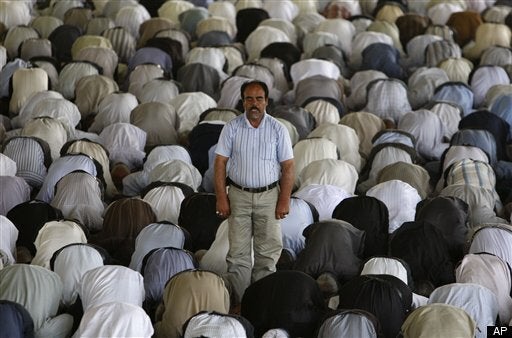
The violent and repressive tactics playing out today in the streets of Tehran bring back haunting images from the last Iranian revolution.
On September 8 (Black Friday), 1978, the Shah's troops fired on 20,000 pro-Ayatollah Khomeini protesters in Tehran's Jaleh Square, killing between 400 and 900 protesters, wounding 4,000, and placing what historian Ervand Abrahamian described as "a sea of blood between the shah and the people." As protests intensified and strikes paralyzed the country, the Shah recognized his precarious hold on power and appointed a military government, closed schools and universities, suspended newspapers and prohibited meetings of over three persons in Tehran. The strikes increased. The Shah fled to Egypt in January 1979 and Khomeini returned from exile on February 1.
The divisions in Iran's leadership we are witnessing today also are reminiscent of 1978-79. Power struggles emerged immediately during and after the Revolution, with one side advocating various forms of moderation and the other clerical absolutism. Two prominent antagonists were Ayatollah Ruhollah Khomeini, representing hard-line clerical authority, and sociologist and activist Ali Shariati, representing, according to John Esposito, "a more nonclerical, innovative, creative reformist approach." The names have changed but the struggle continues, and this split in Iran's leadership has been propelled into the international spotlight in the aftermath of the disputed election of June 12th. Although the hard-liners prevailed in 1979, they cannot be assured of it today.
But today's protests are not a repeat of 1979. A significant difference between then and now involves the reasons behind the protests. The revolution of 1978-79 was the culmination of a gradual rejection of the Shah's domestic policies -- including his authoritarian secularism -- and foreign, and especially American, influence in Iran. Revolutionaries of different persuasions, who might be labeled secular, religious, or perhaps neither -- our categories fail us here -- all opposed the Shah's state-imposed secularization and modernization.
The Iranian revolution was not a religious backlash against secular modernity, as often portrayed. Nor was it an attempt to merely return to Islam. It was a challenge to an autocratic secularist regime widely perceived as connected to illegitimate and culturally distant outside economic and political interests. As historian Robert Allison has provocatively observed, "the Iranian people did not rebel against their own failed rulers but against ours."
Today's protests are different. This is not about the West. It is about which revolutionary political camp will prevail in 2009: the hard-liners or the moderates, with the latter representing the demonstrators. The hard-liners who took over after the revolution replaced an imperial form of secular modernity with an imperial form of religious modernity. Said Arjomand described this eloquently as a shift from "from temporal to theocratic absolutism." Neither is sustainable.
Today's protests offer a glimpse of a third path that rejects the "secularism versus political Islam" dichotomy and its tired politics. Iranians have had enough of those politics, represented respectively by the Shah and Ayatollah Khomeini, and are looking for a third way out. This is in part what these protests are about. It is possible that Mousavi is operating in this "third" space. In his "Statement number 5 to the Iranian people" of June 20th, 2009 he denounces both those who believe that "Islamic government is the same as Tyranny of the Rightful" and those who "consider religion and Islam to be blockers for realization of republicanism," i.e. those who believe that democracy is incompatible with Islam.
A second difference is that under President Obama's steady and deeply pragmatic leadership the United States is doing the right thing this time. By supporting the Shah's repression of both secular and religious opponents in the 1970s, the United States unwittingly empowered the most radical elements of the Shah's Islamist opposition. Today, in maintaining distance the United States has wisely inoculated itself from accusations of meddling in Iranian affairs. And rather than emboldening the hard-liners through oppositional rhetoric, the United States is quietly, tacitly, empowering the dissenters. Not the political opposition necessarily, but the protestors themselves.
Today's oppositional politics in Iran cannot be captured in our conceptual frame of secular versus religious politics, or explained through historical analogies. As in many other things, it is up to the Iranians to tell us what this all means.